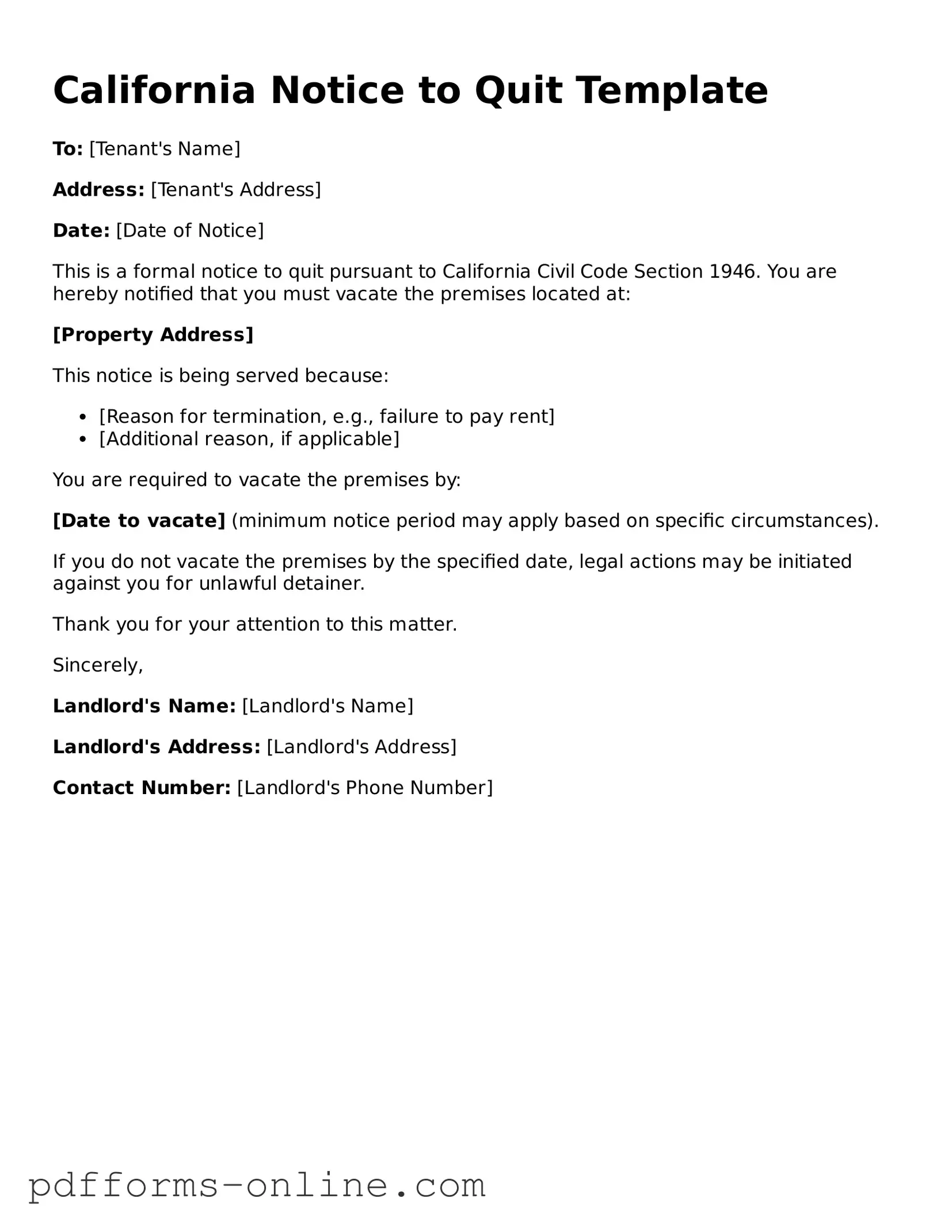Valid California Notice to Quit Template
The California Notice to Quit form is a legal document used by landlords to inform tenants that they must vacate the rental property. This notice typically specifies the reason for termination and the time frame in which the tenant must leave. Understanding this form is crucial for both landlords and tenants to navigate their rights and responsibilities effectively.
Ready to fill out the Notice to Quit form? Click the button below to get started.
Open This Notice to Quit Online
